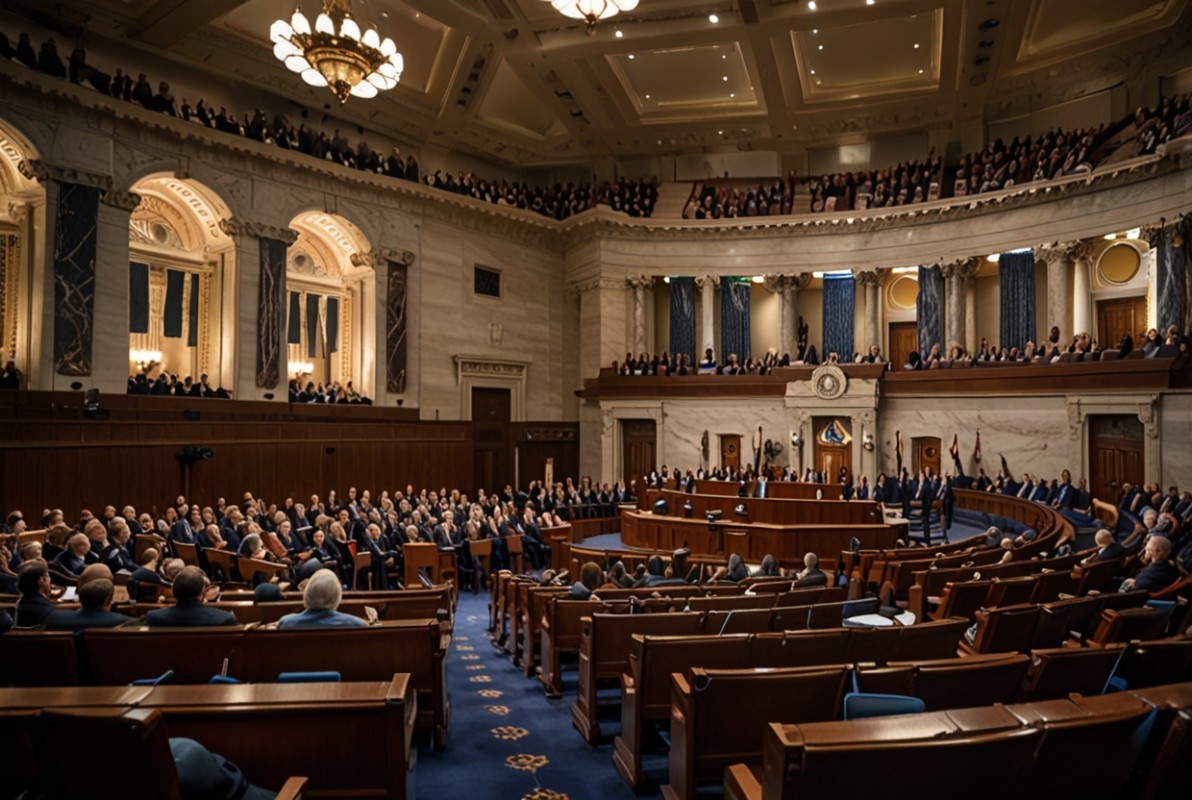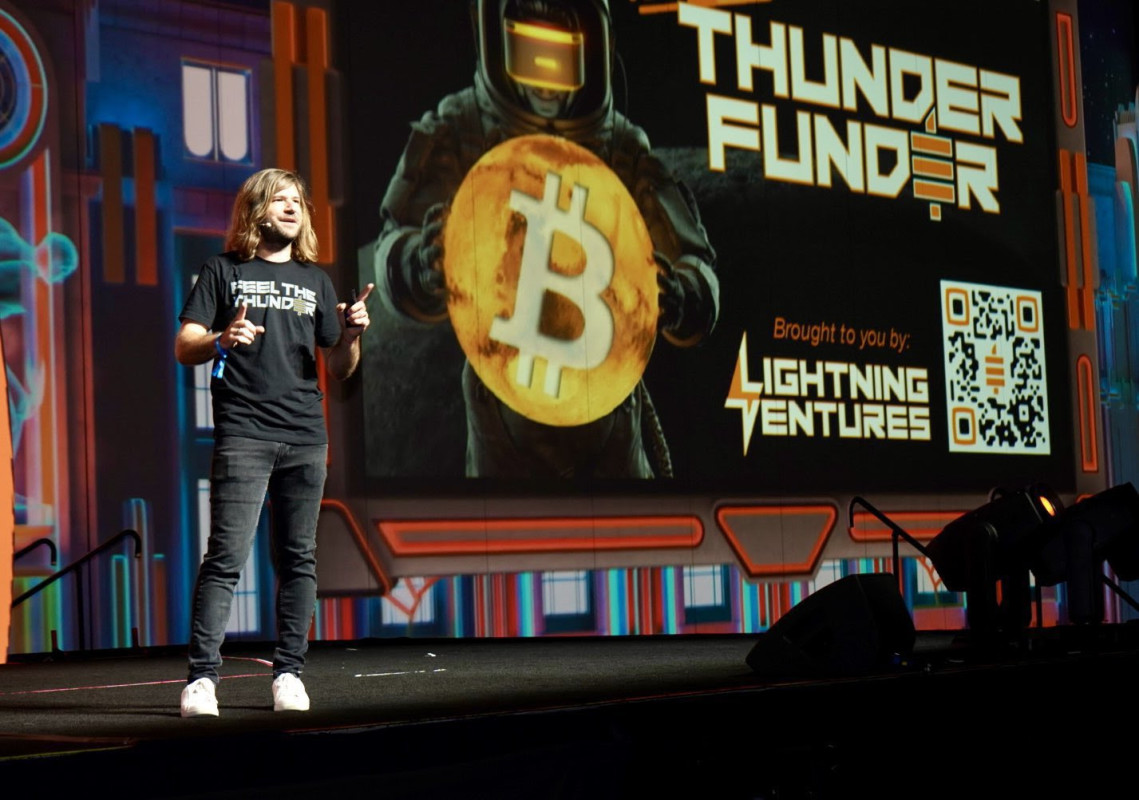Month: August 2024
Bitcoin’s Anticipated Retail Resurgence
Bitcoin’s recent price action has been a rollercoaster of highs and lows. However, even though bitcoin has set a new all-time high and had two years of a near-constant positive trajectory, we’re yet to see a consistent influx of retail investors. The potential for a surge in retail participation and the possibility of elevating the bitcoin price to unprecedented levels are prospects that many investors are anxiously anticipating. In this article, we’re going to explore when we might see these retail investors dive back into the bitcoin pool and whether their return could indeed propel BTC to even greater heights.
Click the image to start your free trial! Or click here.
Active Address Growth and its Impact
To anticipate this potential retail wave, it’s important to scrutinize the trend of active address growth. Data sourced from Bitcoin Magazine Pro suggests a downward swing in the number of active network participants in recent months. The 365-day moving average (blue line), along with the 60-day (purple line) and 30-day averages (red line), tell a tale of decreased network activity. This drop takes the count of active users back to levels reminiscent of early 2019, following bitcoin’s bear cycle, when prices hovered between $3,500 to $4,000.
This decline in active network users raises eyebrows about bitcoin’s upside potential in the current cycle. Interestingly, despite bitcoin hitting a new record of roughly $74,000, there was no corresponding sustained uptick in network users, a stark departure from previous cycles.
Figure 1: Declining averages of Bitcoin daily active addresses. Access Live Chart 🔍
The Necessary Inflow of New Capital
This trend could be a reflection of Bitcoin’s evolving identity. Originally a digital peer-to-peer currency, Bitcoin is increasingly seen as a store of value. As a result, fewer people are using it for everyday transactions and are instead pouring capital into bitcoin as a long-term asset.
The Bitcoin HODL Waves & Realized Cap HODL Waves shed light on this shift. These metrics group Bitcoin network users based on the duration they’ve held their coins, as well as showing their influence on the accumulation price of BTC. Recent data reveals that about 20% of bitcoin has been held for three months or less, indicating that new users are entering the market, but as we can see from the average active addresses in the above data, not using Bitcoin as frequently as before.
The impact of these new users on the realized cap (the average accumulation price of all BTC) is considerable, with over 40% of recent influence coming from users holding Bitcoin for three months or less (indicated by the warmer red/orange colors in the chart below). This suggests that users are entering the market at higher prices and are behaving in a manner consistent with previous cycles (we’re recently seen the initial early bull cycle inflows at comparable levels to previous cycles, indicated by the red box), just not as frequently as we have previously seen.
Figure 2: We’ve recently seen the initial early bull cycle inflows at comparable levels to previous cycles, indicated by the red box. Access Live Chart 🔍
Understanding Market Forces and Retail Involvement
A look at Bitcoin’s past cycles shows that a surge in retail activity often precedes market peaks. For example, in the 2017 and 2021 bull runs, retail interest spiked around 6 months before the price peaks. The current absence of a significant increase in retail interest, as evidenced by Google Trends, suggests we’re experiencing a more measured, and more sustainable market growth.
Another key consideration is the Bitcoin Open Interest chart, which measures the total value of open bitcoin futures contracts. Since late 2022, this metric hasn’t shown a significant increase; in fact, we’ve seen a steady decline since the bear cycle lows (indicated by the declining red line in the chart below). Revealing that investors are now preferring to trade actual bitcoin rather than merely participating in derivatives trading. This indicates a shift in narrative where investors are more interested in holding bitcoin for the long haul rather than chasing short-term speculative gains.
Figure 3: Declining trend of $BTC open interest indicating a decrease in coin denominated derivative traders since cycle lows. Access Live Chart 🔍
Conclusion
Given current trends, the lack of a retail frenzy could be seen as a positive sign for the market’s long-term prospects. As bitcoin approaches new record highs, keeping a close eye on the arrival of retail investors will be essential. If retail investors start entering the market in large numbers, will they fall back into old habits of pure FOMO buying, or will they continue to favor long-term holding?
In short, despite a fall in Bitcoin’s active user metrics, the market shows signs of stability and long-term investment. The absence of immediate retail interest might seem bearish, but it’s more likely to be bullish as it indicates a more measured and sustainable growth trajectory.
For a more in-depth look into this topic, check out a recent YouTube video here:
The BITCOIN Act of 2024
Following the announcement on July 27th at the Bitcoin conference in Nashville, the “Boosting Innovation, Technology, and Competitiveness through Optimized Investment Nationwide” or BITCOIN Act of 2024, introduced by Senator Cynthia Lummis of Wyoming, seeks to firmly establish Bitcoin as a strategic asset in the United States’ financial arsenal. At its core, the Act proposes the creation of a Strategic Bitcoin Reserve (SBR) and a structured Bitcoin Purchase Program, and comprehensive national custody policy. While the bill is quite brief, what follows is a breakdown of the Act’s key provisions, their implications, and the innovative funding mechanisms employed.
The Strategic Bitcoin Reserve
The establishment of the SBR signifies a paradigm shift in how the United States government manages and custodies Bitcoin at the Federal level. Mirroring many of the best practices currently discussed in the field, such as geographically distributed keys, a cold storage mandate, and independent proof-of-reserves audits, the SBR creates a decentralized network of secure Bitcoin storage facilities across the United States. (Notably not mentioned, however, is a multi-signature system, however it is not explicitly prevented either.) The Act thereby aims to protect against breaches and vulnerabilities to a single catastrophic event.
Bitcoin Purchase Program
The Act lays out a plan to acquire up to 1,000,000 Bitcoins over a five-year period, capping purchases at 200,000 Bitcoins annually, and then holding such reserves for twenty years. Furthermore, the Act places limits on the use and sale of the reserve following the holding period. During the minimum holding period, no Bitcoin held by the Federal government in the SBR may be sold, swapped, auctioned, encumbered, or otherwise disposed of for any purpose other than retiring outstanding Federal debt instruments.
Funding the Bitcoin Purchase Program
In order to minimize the impact on taxpayers, the Act employs several methods to finance the acquisition of Bitcoin, ensuring economic sustainability without increasing Federal debt.
It first proposes an amendment to the Federal Reserve Act to reallocate discretionary surplus funds from the Federal Reserve Banks. This reduces the discretionary surplus funds from $6.825 billion to $2.4 billion. The Federal Reserve is then required to remit net earnings to the Treasury, and the Act redirects the first $6 billion towards purchasing Bitcoin.
Furthermore, the Act also involves an adjustment in the valuation of gold certificates held by the Federal Reserve. Currently, the Federal Reserve holds gold certificates which are marked at $42.22/oz, while the market price of gold is closer to $2,400 today. Essentially, this forces the Federal Reserve to mark-to-market the gold certificates, then remit the gain on the gold to the Treasury for the purpose of funding the initial acquisition.
State Participation
The Act contemplates accepting State-level Bitcoin holdings into the national framework through voluntary participation. This aspect allows individual states to store their Bitcoin holdings within the SBR in segregated accounts. By offering this option, the Federal government allows (but does not require) States to add Bitcoin to their own treasuries, without having to reinvent and reimplement a robust security plan.
States participating in the program maintain exclusive and segregated title to their Bitcoin, and the right to withdraw or transfer their Bitcoin holdings from the SBR, subject to the terms of their contractual agreement and any applicable Federal regulations, but are not subject to the Federal restrictions otherwise applicable to the SBR. This flexibility ensures that States can manage their Bitcoin treasuries in accordance with their specific financial strategies and needs.
Implications & Next Steps
By tapping into existing financial resources and leveraging the economic value of gold, the BITCOIN Act aims to acquire Bitcoin without directly burdening taxpayers or increasing federal debt. This multifaceted approach underscores the innovative financial strategies the Act employs to integrate Bitcoin into the national reserve system, setting the stage for a comprehensive Bitcoin policy throughout all levels of the United States government.
Readers who wish to support the Act should contact their legislators, either directly or through a tool such as this one built by the Satoshi Action Fund.
This is a guest post by Colin Crossman. Opinions expressed are entirely their own and do not necessarily reflect those of BTC Inc or Bitcoin Magazine.
The Key to FROST: What is Distributed Key Generation?
Multisig is a familiar concept for most in Bitcoin: a multisig transaction requires approval from multiple parties before it can be executed. We distinguish between “n-of-n” multi-signatures, where the number of involved parties is n, and they all need to approve, and “t-of-n” threshold signatures, where only a smaller number t of participants need to approve. Cryptographic schemes like MuSig, MuSig-DN and MuSig2 for multi-signatures and FROST by Komlo and Goldberg for threshold signatures can reduce transaction cost and improve privacy of multisig wallets.
So far, in the Bitcoin Community FROST has only been used in experimental implementations. In this post, we explain why this is the case and how we aim to advance FROST in a Bitcoin production environment through our recent publication of a BIP draft for the ChillDKG distributed key generation protocol.
First, what are the benefits of FROST?
Privacy and Efficiency Gains with MuSig2 and FROST
With MuSig2 and FROST, even though multiple participants contribute to the signing process, the outcome is a single signature.
This not only gives better privacy to the participants by making the transaction look like as ordinary singlesig-wallet transaction. It also trims down the transaction, reducing its size and therefore lowering the transaction fee. All great things!
MuSig2 and FROST allow Bitcoin users to operate a multisig wallet with the same transaction cost as a regular single-signature wallet. The cost benefits are especially significant for systems with a large number of signers and frequent transactions, such as federated sidechains like Liquid or Fedimint. Unlike traditional multisig, which leaves a distinct fingerprint that allows blockchain observers to identify transactions of the wallet, FROST-based wallets are indistinguishable from regular single-signature wallets on the blockchain. Therefore, they provide an improvement in privacy compared to traditional multisig wallets.
While MuSig2 has seen adoption from the Bitcoin industry, the same cannot be said for FROST as far as we know. This may be surprising, considering the existence of multiple FROST implementations, such as in ZF FROST (by the Zcash Foundation), secp256kfun (by Lloyd Fournier), and an experimental implementation in libsecp256k1-zkp (by Jesse Posner and Blockstream Research). There is even a IETF specification for FROST, RFC 9591 (though it is not compatible with Bitcoin due to Taproot tweaking and x-only public keys). One of the most plausible explanations is that FROST’s key generation process is considerably more complex compared to MuSig2.
The Unresolved Puzzle of FROST in Production Systems
FROST essentially consists of two parts: key generation and signing. While the signing process closely resembles that of MuSig2, key generation is significantly more involved than in MuSig2. Key generation in FROST is either trusted or distributed:
Trusted key generation involves a “trusted dealer” who generates the key and distributes key shares to the signers. The dealer represents a single point of failure: if malicious or hacked, the FROST wallet is at risk of being emptied.Distributed key generation (DKG), while eliminating the need for a trusted dealer, presents its own challenges: All participants need to be involved in an interactive key generation “ceremony” run before signing can start.
The Core Challenge: Agreement
DKG typically requires secure (i.e., authenticated and encrypted) channels between participants to deliver secret shares to individual signers, and a secure agreement mechanism. The purpose of the secure agreement mechanism is to ensure that all participants eventually reach agreement over the results of the DKG, which include not only parameters such as the generated threshold public key, but also whether no error occurred and the ceremony was not disrupted by a misbehaving participant.
While the IETF specification considers DKG out of scope entirely, the FROST implementations mentioned above do not implement secure agreement, leaving this task to the library user. But agreement is not trivial to implement: there exist countless protocols and flavors of agreement, ranging from simple echo broadcast schemes to full-fledged Byzantine consensus protocols, and their security and availability guarantees differ significantly, and sometimes subtly.
Despite the confusion that may arise due to this jungle of agreement protocols, the exact flavor of agreement that DKG relies on is often not clearly communicated to engineers, leaving them in the dark.
ChillDKG: a Standalone DKG for FROST
To overcome this obstacle, we propose ChillDKG, a new “ready-to-use” DKG protocol tailored to the use in FROST (draft). We provide a detailed description in the form of a draft of a Bitcoin Improvement Proposal (BIP), which is intended to serve as a specification for implementers.
The main feature of ChillDKG is that it is standalone: The establishment of secure communications and secure agreement is done within the protocol, while all of this underlying complexity is hidden behind a simple and hard-to-misuse API. As a result, ChillDKG is ready to use in practice and does not rely on any setup assumption, except that each signer has decided on the set of co-signers as identified by individual public keys. ChillDKG is based on the SimplPedPop protocol, in whose design and formal security proof Blockstream Research has been involved, see, the CRYPTO 2023 paper “Practical Schnorr Threshold Signatures Without the Algebraic Group Model” by Chu, Gerhart, Ruffing (Blockstream Research), and Schröder
Additional goals for ChillDKG’s design include:
Broad applicability: ChillDKG supports a wide range of scenarios, from those where the signing devices are owned and connected by a single individual to those where multiple owners manage the devices from distinct locations.Simple backups: Instead of having to back up secrets received from the other signers in a secure location, ChillDKG allows restoring the wallet solely from the device seed and public data that is the same for all DKG participants. Consequently, an attacker gaining access to the public backup data does not obtain the secret signing key, and if a user loses their backup, they can request it from another honest signer.
The ChillDKG BIP is currently in draft stage, and we are seeking feedback on design choices and implementation details. While the specification is mostly complete, it lacks test vectors, and we are considering adding some additional features (e.g., “identifiable aborts”). Once finalized, the ChillDKG BIP can be used in combination with a BIP for FROST signing to instantiate the entire FROST protocol.
This is a guest post by Jonas Nick, Kiara Bickers, and Tim Ruffing. Opinions expressed are entirely their own and do not necessarily reflect those of BTC Inc or Bitcoin Magazine.
Morgan Stanley to Offer Bitcoin ETFs to Wealth Clients: CNBC
In a significant move among major Wall Street banks, Morgan Stanley will soon allow its financial advisors to offer Bitcoin ETFs to certain clients, CNBC reports. Starting Wednesday, the firm’s 15,000 advisors can pitch BlackRock’s iShares Bitcoin Trust and Fidelity’s Wise Origin Bitcoin Fund to eligible clients.
BREAKING: Morgan Stanley tells wealth advisors they can pitch #Bitcoin ETFs, CNBC reports. pic.twitter.com/2tgSeR2yEm
— Bitcoin Magazine (@BitcoinMagazine) August 2, 2024
Morgan Stanley’s move is in response to high client demand for Bitcoin. However, the bank is still maintaining a cautious approach to Bitcoin: only clients with a net worth of at least $1.5 million, a high-risk tolerance, and an interest in speculative investments are eligible for bitcoin ETF solicitation, sources told CNBC. These investments are limited to taxable brokerage accounts, not retirement accounts. The bank will monitor clients’ Bitcoin holdings to prevent excessive exposure to this volatile asset class.
Other major banks, including Goldman Sachs, JPMorgan, Bank of America, and Wells Fargo, continue to restrict their advisors from pitching bitcoin ETFs unless clients explicitly request them, the report stated.
This decision marks a significant step towards institutional adoption of bitcoin in traditional finance. Morgan Stanley’s offering of these ETFs reflects the growing integration of Bitcoin into mainstream finance and sets a precedent for other wealth management firms to follow.
Congressman Wiley Nickel On Reforming The Democrats’ Bitcoin Strategy
On the main stage of Bitcoin 2024, Rep. Wiley Nickel (D-NC) shared that he’s working to have the Democrats shift to a more pro-Bitcoin and pro-crypto stance.
He told the audience at the event that he’d recently written a letter to the DNC signed by 28 Democrats, 14 of which are in Congress, advocating for a new approach to digital asset policy from the party and its presidential nominee.
Rep. Nickel explained that the new approach should include “pro-digital asset language in the party’s platform, selecting a vice presidential candidate sophisticated in digital asset policy, selecting a pro-innovation SEC chair, and engaging with the industry in a meaningful way.”
We followed up with Rep. Nickel in efforts to learn more about how he plans to get the Democrats on the Bitcoin bandwagon.
A transcript of our conversation, edited for length and clarity, follows below.
Frank Corva: What were your takeaways from the Bitcoin conference?
Rep. Wiley Nickel: I had a great time. I enjoyed speaking with folks involved with this issue at all levels and, most importantly, making the progressive case for crypto and why the work that we’re doing as Democrats in Congress is so important.
Keeping this in the bipartisan space was really my main focus in Nashville, and it’s what I’ve been working on in Congress. If this becomes a partisan political football — and Donald Trump, more than anyone, wants to politicize this issue — it’s going to set the industry back a decade in Congress.
DeFi and Bitcoin will continue regardless of who’s in power, but it’s really important that we get clear rules of the road, we have good regulation for the industry to protect consumers and to keep those jobs here and encourage innovation. That has been my focus in Congress, and I was glad I got to reiterate that in Nashville.
Corva: I think it is important for more middle-of-the-road Democrats like yourself to have a voice. Do you feel like there are more Democrats like you who do want to speak like this, who want to say they’ll keep Bitcoin and crypto jobs in the United States and that they want the US to be at the forefront of financial innovation?
Rep. Nickel: I do, because, frankly, we’re just right on the issue. Talking about financial inclusion is incredibly important. The current financial system just doesn’t work for everyone, and we have an incredibly promising solution here with crypto and Bitcoin that will help the folks I represent in a major way.
I think we’re seeing a new perspective on digital asset regulation emerging in the Democratic Party. Whether you love crypto or hate it, it’s here to stay. So, we have to protect consumers, foster innovation and bolster US competitiveness. Those are the big issues that matter in a public policy sense.
We’re working hard to build a coalition of like-minded Democrats across our party. We’ve succeeded in encouraging the Harris campaign to engage with industry, and I’m continuing to make the case for a reset.
The progress we made in the House of Representatives is undeniable: 71 Democrats joined with Republicans on FIT21, the digital asset market structure bill. Actions speak louder than words. The fact that I was able to get Nancy Pelosi and members of our House Democratic leadership on board with this bill says good things for keeping the future of Bitcoin in that bipartisan space.
Corva: That is an important and good reason for single issue voters or pro-crypto voters to consider voting for Democrats more if that’s their stance in these upcoming elections. Is there anything else that you want to say to pro-Bitcoin or pro-crypto voters to let them know that the Democrats do not want to be the party that stifles this innovation. Can these voters believe that things will be different than they have been over the course of the last three and a half years?
Rep. Nickel: Absolutely, and I thought it was important to author a letter to the DNC and to the Harris campaign, which I announced in Nashville from the stage. It’s a letter encouraging the DNC to include pro-digital asset language in the party’s platform, to appoint a pro-innovation SEC chair, and for the campaign to engage with industry experts. Those were some of the big points in the letter.
We’ve got 13 other House Democrats to join the letter, and a lot more support it. I wanted to put that out there so folks know that this is an important issue. You’ve got 20% of registered voters who own crypto, and there are well over a million single issue voters, so we need to continue to offer good public policy positions on the issue. I think we’re gonna see that from the Harris campaign in the coming weeks.
Corva: Looking back on the most practical level, what do you think the Democrats might have been able to do differently or better during the Biden administration?
Rep. Nickel: On the positive side, we have bitcoin and ether ETFs that the SEC approved, So, I can’t disagree with that. We worked in Congress hard to get the SEC to do that in a bipartisan way on the House Financial Services Committee, where I serve. I’m also on the Subcommittee on Digital Assets. We deal with this issue a lot in the House.
But Gary Gensler’s regulation by enforcement approach at the SEC has not served Kamala Harris’s interests or Joe Biden’s. Gary Gensler has taken the wrong approach, but he’s not the only voice in the Biden administration. There are a lot of other senior leaders who feel very differently. A lot of other regulators like Rostin Behnam at the CFTC have a different approach. So, we’ve got one regulator who is moving in the wrong direction, but it’s important for folks to know that he does not represent all Democrats.
Corva: Are Democratic senators and members of Congress learning about the positive use cases of Bitcoin? This includes financial inclusion; providing financial services to the unbanked, not only in the United States, but globally; cheap remittances; etc. Do you find that politicians are becoming more educated?
Rep. Nickel: Number one, it’s just about education. The folks that supported FIT21 on the Democratic side were the ones who were engaged, who were willing to take meetings and listen, understand and learn about this very new technology.
This is not the same place that we were four years ago, eight years ago or 12 years ago. To your point, you’re 100% right. You’ve got 1.4 billion people unbanked globally, and most of these people are part of marginalized communities. This hinders their financial management and deepens poverty and inequality. There is a very strong progressive case for how crypto can revolutionize financial inclusion, economic empowerment and offer new ways to build wealth outside of the traditional financial system.
Corva: Thinking beyond the borders of the United States, Bitcoin bestows property rights — something we have strong laws to protect here in the US — by default on people. This is powerful in places where people don’t have such rights. Will more progressives come out to acknowledge that this is important?
Rep. Nickel: I certainly hope so. That’s been my focus in Congress. We need to embrace new technology. You look back on the Internet and to think that you would have people in one political party opposing the Internet in the 90s, it’s just nuts to think about.
When you look back in a decade and the opposition to embracing Web3 in Congress — that position will not age well. The folks who oppose crypto on the Democrat side are just flat out wrong, and they’re not really looking at how we can strengthen this industry and protect consumers.
I spent most of the last year and a half talking about how our legislation in Congress will prevent the next FTX. That’s an important part for Americans to focus on.
I went on a CODEL (Congressional Delegation) with Patrick McHenry (R-NC), the Chair of the House of Financial Services Committee. We went to Singapore, Abu Dhabi, Tokyo to see mature crypto regulation, regulators and markets. One of the things they all said is they need the US to be part of the solution here. They need the United States to lead for the rest of the world.
This really is about democratizing finance. When we do that, we’re going to be able to uplift people all over the US when they are able to save money and transfer money. They’ll be able to do it much faster, with less red tape. Those are really good things if you’re talking about uplifting people in the US and around the globe with Bitcoin and other Web3 or blockchain technology.
Corva: One of the big things that Bitcoiners are worried about — and it’s something that both presidential candidates Trump and Kennedy have spoken directly to — is the idea of being able to hold your own private keys without any sort of AML/KYC requirements. Are Democrats in favor of everyone being able to hold their own keys in a non-custodial manner?
Rep. Nickel: In Congress, we’ve really focused on doing a few things before we get into the next level of stuff. It’s about regulating the industry, FIT21, the digital assets market structure bill and stablecoins. We’ve gotten sidetracked with SAB121 for custodial banking.
Those are the things that I think we need to tackle first, and then we get into the next layer of stuff, and I’m really hopeful we’re going to get those things done this Congress.
Corva: Two days after the Bitcoin conference, some of the bitcoin in custody of the US government moved addresses. Do you know where the government moved it to? Is the US government selling it? Have you heard anything about what’s going on?
Rep. Nickel: No, I haven’t.
Corva: Do you have any final thoughts you’d like to share?
Rep. Nickel: We’re just pushing hard for a reset with the Harris campaign on this issue. Trump certainly made his positions clear.
I’m just pushing to make sure that folks who own crypto — evenly split between parties — know this is an issue that matters for Democrats in the US Congress.
Retail Investors Can Now Invest in Bitcoin Startups with Thunder Funder
Lightning Ventures, a VC firm in the Bitcoin space, launched Thunder Funder, a Regulation Crowdfunding (Reg CF) portal, at the Bitcoin 2024 conference last week. The platform aims to democratize early-stage investing in Bitcoin and open-source startups by allowing both accredited and non-accredited investors to participate.
Thunder Funder leverages the Reg CF framework, which permits companies to raise up to $5 million annually from the public. For the first time, this opens up largely inaccessible startup investment opportunities to retail investors interested in the booming Bitcoin and open source sectors.
Lightning Ventures has invested over $6.8 million in nearly 40 Bitcoin companies. With this new platform, “We’re activating a new group of retail investors,” said Mike Jarmuz, CEO of Thunder Funder.
The founding team comprises CTO Uncle Rockstar, an early contributor to BTCPay Server, and COO Vivek Patel, who previously worked at PrimeTrust.
Max Keiser and Swan Bitcoin CEO Cory Klippsten’s El Zonte Capital invested in the Lightning Ventures $500,000 pre-seed round to launch the platform alongside Brad Mills and Chris Hunter.
With Thunder Funder, regular investors can now directly fund innovative Bitcoin projects that were previously only accessible to accredited and institutional investors. This could accelerate development and progress in the Bitcoin and open-source ecosystem.
Global Liquidity Hits All Time High, Bitcoin To Follow?
According to data from Bitcoin Magazine Pro, the global money supply, also known as global liquidity, has hit an all-time high of $95 trillion; Bitcoin investors and analysts closely watch this key indicator, as higher liquidity has historically preceded major bull runs.
Global liquidity is the total amount of money circulating in the global financial system. It encompasses the M2 money supply of major economies like the U.S., China, EU, Japan, etc. M2 includes cash, bank deposits, money market mutual funds, and other near-money assets.
This figure recently hit $95 trillion, approaching the $100 trillion milestone. The previous all-time high was around $95 trillion, as well, when Bitcoin hit a new ATH in March this year at $73,000 and $90 trillion when Bitcoin hit its peak of $69,000 in November 2021.
Higher global liquidity encourages spending on riskier assets like Bitcoin. Past data shows a strong correlation between liquidity expansion and Bitcoin bull markets. This is because more money creation typically leads central banks to lower interest rates and implement quantitative easing. This dynamic has played out repeatedly over Bitcoin’s history.
Some investors view Bitcoin as an alternative to the central banking system because it has a fixed supply schedule. Bitcoin could be poised for another price surge if the current upward liquidity trend persists.
Bitcoin has already recovered to around $64,500 after dipping below $60,000 briefly last month. With global liquidity hitting new highs, Bitcoin appears primed to continue its bull run.
Dollar falls as data points to economic slowdown; sterling weak
Post Content
Asia FX muted, dollar steadies with nonfarm payrolls on tap
Post Content
Michael Saylor’s MicroStrategy Bought 169 Bitcoin For $11.4 Million In July
MicroStrategy Incorporated (Nasdaq: MSTR) reported its financial results for Q2 2024, revealing an increase in its Bitcoin holdings. The company acquired 12,222 bitcoins since the beginning of the quarter, at an average price of $65,882 per bitcoin, bringing its total holdings to 226,500 BTC, purchased for $8.3 billion at an average cost of $36,821 per bitcoin, as of July 31st. In July alone, MicroStrategy acquired an additional 169 BTC for $11.4 million, Michael Saylor announced.
In July, @MicroStrategy acquired an additional 169 BTC for $11.4 million and now holds 226,500 BTC. Please join us at 5pm ET as we discuss our Q2 2024 financial results, the outlook for $BTC, and our #Bitcoin development strategy. $MSTRhttps://t.co/cfGPc42jfM
— Michael Saylor⚡️ (@saylor) August 1, 2024
President and CEO Phong Le highlighted the company’s focus on its Bitcoin strategy, introducing “BTC Yield” as a key performance indicator. This metric measures the percentage change in the ratio of the company’s Bitcoin holdings to its assumed diluted shares outstanding. Year-to-date, MicroStrategy achieved a BTC Yield of 12.2%, targeting an annual yield of 4-8% from 2025-2027.
In addition to its Bitcoin strategy, MicroStrategy saw a 21% year-over-year increase in subscription services revenues, totaling $24.1 million. The company also successfully raised $800 million through a convertible senior notes offering and announced a 10-for-1 stock split effective August 7, 2024.
“Since the beginning of Q2, we grew our bitcoin holdings by adding 12,222 bitcoins through proceeds from our capital markets activities and excess cash,” said CFO Andrew Kang. “Additionally, we announced a 10-for-1 stock split earlier this month. We continue to closely manage our equity capital, and are filing a registration statement for a new $2 billion at-the-market equity offering program. Through our use of intelligent leverage, we have again achieved a ‘BTC Yield’ of 12.2% year-to-date, which we believe demonstrates significant bitcoin accretion to shareholders.”
As of June 30, 2024, the original cost basis and market value of MicroStrategy’s Bitcoin were $8.3 billion and $14 billion, reflecting an average cost per Bitcoin of $36,798 and a market price per Bitcoin of $61,926.69.








